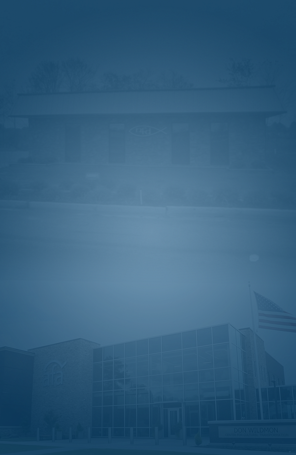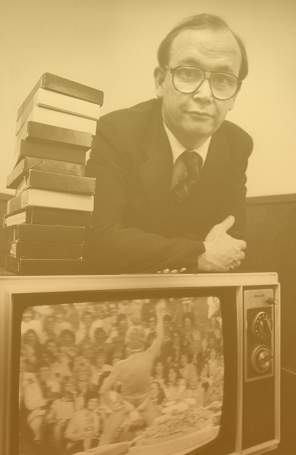(Editor's Note: The following was first published in the May 2003 edition of the AFA Journal.)
May 2003 – War has been around for a very long time. Since the beginning of history, men have engaged in military conflict. Here in America, our own country was born as the result of a war for independence. And, in recent months, we have been engaged in yet another war to bring freedom to the people of Iraq.
As long as there has been war, there have been men who willingly placed their lives in jeopardy because of their belief in a particular cause, and/or because of their great love of country.
War brings fear and the reality of death, and most who engage in a military struggle become concerned about what will happen to them if they are killed. Will they go to heaven? Will they go to hell? Is there a heaven and a hell? Where is God in all this?
Here in America, as far back as the Revolutionary War, there has been a recognized need for spiritual guidance and comfort for those fighting on the battlefield. In that war, ministers took leave from their churches and served as the nation’s first chaplains. Since World War II, U.S. chaplains have not carried weapons and are classified as non-combatants, consistently leaving themselves open to being wounded or killed.
Chaplains have served in every American war. Thousands of valiant, godly men have risked their lives for the wounded and dying – to give a drink of water, to bandage a bloody wound, to comfort and pray, or to hold the hand of a fallen brother as he slips into eternity. Many chaplains have lost their own lives while in service to God and country. Men such as these epitomize John 15:13: “Greater love hath no man than this, that he lay down his life for his friends.”
This Memorial Day, it is the AFA Journal’s privilege to honor America’s chaplains by relating the stories of some who gave their “last full measure of devotion.”
Chaplain John L. Lenhart
Civil War • 1805-1862
Lenhart was Pennsylvania born and bred. His initial calling was as a Methodist minister, but in 1847 he became a Navy chaplain and served aboard the USS Brandywine for three years. His chosen vocation was apparently rewarding, since he continued as chaplain aboard various vessels for the next several years.
In the early 1860s, as the Civil War loomed on the horizon, Lenhart was assigned to the USS Cumberland, a sailing frigate that had been converted to a war sloop. On March 8, 1862, the Cumberland was anchored off Newport News, Virginia, when the CSS Virginia, an ironclad warship powered by steam, came out to attack federal warships in Hampton Roads. In a battle that decisively demonstrated the superiority of the armored ships over wooden sailing sloops, the Virginia rammed and sank the Cumberland.
John Lenhart was killed in that encounter and became the first Navy chaplain to lose his life in battle.
Commander George S. Rentz
World War II • 1882-1942
Another Pennsylvanian, George Rentz graduated from Princeton Theological Seminary and was ordained by the Presbytery of Northumberland in 1909. When the U.S. became involved in World War I, Rentz was appointed acting chaplain and was assigned to the 11th Regiment of Marines in France. He attained the rank of Commander in 1924 and served on several vessels in the years following.
In 1940, Rentz transferred to the USS Houston and devoted his life to providing the ship’s crew and officers with spiritual guidance and hope. With the onset of World War II, the Houston became a part of the allied fleet. On March 1, 1942, the battlecruiser was in the Java Sea, along with Australia’s HMAS Perth. The two ships were overwhelmed by a Japanese troop convoy but fought valiantly to the last. Both took direct hits, ultimately causing them to sink.
Chaplain Rentz found himself in the sea with several other sailors, holding onto a floating piece from one of the Houston’s planes. The float was dangerously overloaded, and Rentz tried to get several of the wounded sailors to take his life jacket. After all, he told them, “you men are young; I have lived the major part, and I am willing to go.”
When he got no takers, Rentz tried to leave his life jacket and float away, only to be brought back by the others. He became an encouragement to all as he prayed and sang hymns. Ultimately, the chaplain placed his life jacket near a wounded sailor who had none, and quietly slipped into the sea.
For giving his life, Chaplain Rentz was awarded, posthumously, the Navy Cross. In addition, a guided-missile frigate, the USS Rentz, was named in his honor.
Captain Herman G. Felhoelter
Korean War • 1914-1950
A Catholic priest from Washington state, Chaplain Herman Felhoelter had been assigned to the U.S. Army’s 19th Infantry Regiment. It was July 16, 1950, and Felhoelter’s unit had been involved in heavy fighting near Taejon and the Kum River in North Korea.
U.S. troops had been met by wave after wave of North Korean troops. Many from Felhoelter’s regiment were wounded, and as he and another 100 men struggled up a hill near the river, they carried nearly 30 wounded as they fled the communists.
It soon became clear that if the men continued carrying the wounded, they would not be able to escape. In a selfless act of bravery, the chaplain urged a medical officer to leave with the others, and he stayed behind with the wounded men. Not long after, a sergeant, concerned with the fate of the rag-tag bunch, lifted a pair of binoculars to his eyes and was shocked and sickened to see enemy soldiers overtake the group and savagely murder them all, including the chaplain who was praying for his friends.
Herman Felhoelter would have been 37 years old the following day. He was awarded the Distinguished Service Cross posthumously. Four days before his death, he had written his mother:
“Don’t worry, Mother. God’s will be done. I feel so good to know the power of your prayers accompanying me. ... I am happy in the thought that I can help some souls who need help. ...”
Lieutenant Robert R. Brett
Vietnam War • 1936-1968
A touching story with a poignant twist is that of U.S. Navy Chaplain Robert Brett. Born in Pennsylvania, Brett earned a B.A. and a master’s degree from Catholic University. After graduating from the Naval Chaplains School in August of 1967, he soon joined the 2nd Battalion, 26th Marines near the Khe Sanh Combat Base in Vietnam.
Brett was known among the troops for his daring and determination as he traveled from post to post, celebrating Mass in the face of nearly constant enemy fire. The chaplain had a special assistant in PFC Alexander S. Chin from Maryland, a religious young man, who had already earned two Purple Hearts for his bravery. Chin had told his superiors he could not kill another human, and had been assigned to help the chaplain. The two were inseparable and became steadfast friends.
On February 22, 1968, the chaplain and his aide found themselves on an airstrip in Khe Sanh where they were waiting for a chopper to take them back to battalion headquarters. They were about to board the helicopter when they came under enemy fire. Witnesses said that Brett told the chopper to take off without him and his aide, which allowed Lt. Pete Post to go instead. As the two headed back to the trench, Post watched helplessly as an incoming rocket struck, killing Brett, Chin and eight others. Fifteen were wounded.
Honored for their bravery, Brett and Chin were buried in their respective family burial plots, where they rested for 30 years. But their story doesn’t end there.
Edward Rouse, nephew of Chaplain Brett, had been 13 years old when his uncle was killed. He had always greatly admired Brett – so much so that he followed in his uncle’s footsteps by becoming a Marine. Because of Chaplain Brett’s sacrifice, Rouse and his family believed it was fitting for him to be buried at Arlington National Cemetery. In late 1998, Rouse made arrangements for Brett to be buried on Chaplain’s Hill.
After learning of the relationship between Brett and Chin, Rouse hired a private investigator who located Chin’s family. They were amenable to Chin’s remains being moved to Arlington. Rouse obtained special permission for Chin to be buried on Chaplain’s Hill, and in 1999, the chaplain’s friend was buried beside him – united in death as they had been in life.
This Memorial Day, let us pause in honor of the millions of men and women who have given their lives in service to this great country as we remember that ‘freedom is not free.’
Memorial Day, originally called Decoration Day, is a day of remembrance for those who have died in our nation's service. More than two dozen cities and towns claim to be the birthplace of Memorial Day, with most naming dates in the early to mid-1860s for the first memorial celebrations.
Nationally recognized on May 5, 1868, by Gen. John Logan, the holiday was also first observed on May 30 that year when flowers were placed on the graves of soldiers buried at Arlington National Cemetery. A "National Moment of Remembrance" resolution was passed in 2000, asking that at 3:00 P.M. citizens pause for a moment of reverence.



















